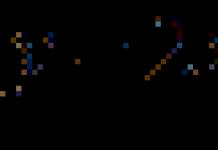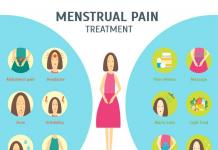L-LYSINE ASCINATE
International nonproprietary name
Dosage form
Solution for injection, 1 mg/ml
Compound
1 ml of solution contains:
active substance- L-lysine aescinate (in terms of 100% substance) - 1 mg;
Excipients - ethanol 96%, propylene glycol, water for injection
Description
Transparent, colorless liquid
Pharmacotherapeutic group
Angioprotectors. Drugs that reduce capillary permeability. Other drugs that reduce capillary permeability
Code ATX С05СХ
Pharmacological properties
Pharmacodynamics.
The drug has anti-inflammatory, anti-edematous and analgesic effects. Escin reduces the activity of lysosomal hydrolases, which prevents the breakdown of mucopolysaccharides in the walls of capillaries and in the connective tissue that surrounds them, and thus normalizes increased vascular-tissue permeability and has an antiexudative (decongestant), anti-inflammatory and analgesic effect. The drug increases vascular tone and has moderate immunocorrective and hypoglycemic effects.
Pharmacokinetics.
Not studied.
Indications for use
Post-traumatic, intra- and postoperative edema of any localization: edema of the brain and spinal cord, including with intracranial hemorrhages, increased intracranial pressure and symptoms of edema-swelling; liquor-venous disorders in chronic cerebrovascular accidents and vegetative-vascular dystonia
Swelling of soft tissues involving the musculoskeletal system, accompanied by local disorders of their blood supply and pain syndrome
Edema-pain syndromes of the spine, trunk, limbs
Severe disorders of the venous circulation of the lower extremities in acute thrombophlebitis, accompanied by edematous-inflammatory syndrome.
Directions for use and doses
The drug is administered strictly intravenously slowly (intra-arterial administration is not allowed!) in a daily dose of 5-10 ml. Intravenous drip administration is recommended. When preparing an infusion solution of L-lysine, escinate is diluted in 15-50 ml of 0.9% sodium chloride solution.
In conditions that threaten the life of the patient (acute traumatic brain injury, intra- and postoperative edema of the brain and spinal cord with symptoms of edema-swelling, large swelling due to extensive injuries to soft tissues and the musculoskeletal system), the daily dose is increased to 20 ml, divided into 2 introductions. The maximum daily dose for adults is 25 ml.
In children, a single dose is: 1-5 years - 0.22 mg of L-lysine aescinate per 1 kg of body weight; 5-10 years - 0.18 mg/kg; 10 years and older - 0.15 mg/kg body weight. The drug is administered 2 times a day.
The duration of treatment is from 2 to 8 days, depending on the patient’s condition and the effectiveness of therapy.
Side effects
With individual hypersensitivity to escin in some patients, the following are possible:
- allergic reactions: skin rash (papular, petechial, erythematous), itching, flushing of the facial skin, fever, urticaria, in isolated cases - Quincke's edema, anaphylactic shock;
- from the central and peripheral nervous system: headache, dizziness, tremor, paresthesia, in isolated cases - unsteady gait, imbalance, short-term loss of consciousness;
- from the liver and biliary system: increased levels of transaminases and bilirubin;
- from the gastrointestinal tract: nausea, in isolated cases - vomiting, diarrhea, abdominal pain;
- from the cardiovascular system: arterial hypotension, arterial hypertension, tachycardia, chest pain;
- from the respiratory system: in isolated cases - a feeling of lack of air, shortness of breath, broncho-obstruction, dry cough;
- local reactions: a burning sensation along the vein during insertion, phlebitis, pain and swelling at the injection site;
- other: general weakness, chills, feeling hot, lower back pain, sweating.
Contraindications
Hypersensitivity to L-lysine escinate and/or other components of the drug
Severe renal impairment
Severe liver dysfunction
Pregnancy
Lactation period
Children's age up to 1 year.
Drug interactions
When treating with L-lysine escinate, it is possible to prescribe other medications for appropriate indications (anti-inflammatory, analgesics, antimicrobials).
The drug should not be used simultaneously with aminoglycosides due to the possibility of increasing their nephrotoxicity. In the case of long-term therapy with anticoagulants, which was carried out before the prescription of L-lysine aescinate, or if it is necessary to use L-lysine aescinate and anticoagulants simultaneously, it is necessary to adjust the dose of the latter (reduce the dose) and monitor the prothrombin index.
The binding of escin to plasma protein is complicated by the simultaneous use of cephalosporin antibiotics, which can increase the concentration of free escin in the blood with the risk of developing side effects of the latter.
special instructions
In some patients with hepatocholecystitis, when the drug is prescribed, a short-term increase in the activity of transaminases and bilirubin (direct fraction) is possible, which does not pose a threat to patients and does not require discontinuation of the drug.
Use during pregnancy and breastfeeding. The use of the drug during pregnancy and breastfeeding is contraindicated (breastfeeding should be stopped during treatment).
Children. The drug is contraindicated in children under 1 year of age.
Features of influence medicine on the ability to drive a vehicle or potentially dangerous machinery. At the moment there are no reports, however, when using the drug, the possibility of developing suspected adverse reactions from the nervous system should be taken into account.
Overdose
Symptoms: fever, tachycardia, menorrhagia, nausea, heartburn, epigastric pain.
Treatment: symptomatic therapy.
Release form and packaging
5 ml of the drug in an ampoule or an ampoule with a yellow break ring or a break point.
5 ampoules are placed in a blister pack made of polyvinyl chloride film or 5 ampoules are placed in a blister pack made of polyvinyl chloride film, covered with film.
2 contour blister packs together with instructions for medical use in the state and Russian languages and an ampoule scarifier are placed in a cardboard pack.
When using ampoules with a breaking point or ring, scarifiers are not inserted.
Storage conditions
Keep out of the reach of children!
Store in a place protected from light, at a temperature of 15 ° C to 25 ° C.
Shelf life
Do not use after expiration date.
Conditions for dispensing from pharmacies
On prescription
Manufacturer
JSC "Galichfarm" Ukraine, 79024, Lvov, st. Opryshkovskaya, 6/8
Address of the organization receiving claims from consumers regarding product quality in the territory of the Republic of Kazakhstan:
Representative office of Arterium Corporation in the Republic of Kazakhstan
Photo of the drug
Latin name: L-Lysine Aescinat
ATX code: C05CX
Active substance: AescinLysinate
Analogues: no data
Manufacturer: GALICHFARM (Ukraine)
Description is valid on: 28.09.17
L-Lysine escinate is a decongestant, anti-inflammatory and analgesic.
Release form and composition
Indications for use
Post-traumatic and postoperative swelling of any localization:
- severe swelling of the spinal cord and brain, including intracranial and subarachnoid hematomas, as well as displacement of the midline structures of the brain and edema-swelling syndrome;
- swelling of soft tissues involving the musculoskeletal system, which are usually accompanied by local disorders of their blood supply and pain;
- swelling and pain syndromes of the spine, limbs and torso;
- severe disturbances of the venous circulation of the lower extremities due to acute thrombophlebitis, which is usually accompanied by edematous-inflammatory syndrome.
Contraindications
- increased individual sensitivity to the components of the drug;
- age up to 1 year;
- severe renal impairment.
Instructions for use of L-Lysine escinate (method and dosage)
Can only be administered intravenously slowly. Intra-arterial administration of the drug is unacceptable. Daily dose – 5-10 ml.
The infusion solution is prepared by mixing Na chloride (50-100 ml of 0.9% solution) and medication. In rare cases, it is allowed to administer the injection very slowly. For IV jet administration, dilute in 10-15 ml of 0.9% sodium chloride solution.
For life-threatening conditions (head injury, spinal cord edema, etc.): double administration of a solution of 20 ml (total daily dose). The course lasts 2-8 days.
Side effects
In some cases, L-Lysine escinate can cause side effects in the form of allergic reactions, which manifest themselves in the form of urticaria, skin rash and angioedema.
Overdose
Symptoms of an overdose of L-Lysine escinate include:
- tachycardia;
- nausea;
- heartburn;
- abdominal pain.
Symptomatic therapy is prescribed.
Analogs
Information is absent.
pharmachologic effect
Escin helps to reduce lysosomal hydrolases, resulting in the breakdown of mucopolysaccharides in the walls of capillaries, as well as in the connective tissue surrounding them. As a result, increased vascular-tissue permeability is normalized. The effect of the drug is due to the properties of the components included in its composition. The drug helps to increase vascular tone and also has moderate hypoglycemic and immunocorrective effects.
special instructions
The use of L-Lysine aescinate against the background of hepatozolecystitis can cause a short-term increase in the activity of transaminases and bilirubin, which does not require discontinuation of the drug.
When taking it, it should be taken into account that the solution concentrate contains up to 2.4 ml of ethanol in a single dose. In this regard, the drug should be prescribed with caution for alcoholism, epilepsy, and liver diseases. The drug may affect psychomotor reactions. But since it is used for severe injuries, this factor does not matter.
During pregnancy and breastfeeding
Contraindicated during pregnancy and lactation.
In childhood
Contraindicated in children under 18 years of age.
In old age
Information is absent.
Drug interactions
- Do not prescribe together with aminoglycosides, as this enhances the negative effect of the latter on kidney function.
- If, before taking the drug, long-term therapy with anticoagulants was carried out and their joint use is planned in the future, it is necessary to adjust the dose under the control of the prothrombin index.
- When used simultaneously with cephalosporin antibiotics, it is possible to increase the concentration of free escin in the blood with the risk of side effects.
- When interacting with other drugs, it should be taken into account that the drug contains 96% ethyl alcohol.
Conditions for dispensing from pharmacies
Dispensed by prescription.
Storage conditions and periods
Store out of reach of children and protected from light at a temperature of +15...+25 °C.
Shelf life - 2 years.
Price in pharmacies
The price of L-lysine aescinate for 1 package starts from 1,597 rubles.
Attention!
The description posted on this page is a simplified version of the official version of the annotation for the drug. The information is provided for informational purposes only and does not constitute a guide for self-medication. Before using the medicine, you must consult a specialist and read the instructions approved by the manufacturer.
The drug L-Lysine Escinat escinat refers to vasoprotective and capillary stabilizing drugs. It is prescribed for the complex treatment of tissue edema of various origins in adults and children over 1 year of age. The use of the drug during pregnancy and lactation in women is not recommended.
Dosage form
The medication is available in a dosage form, a solution for parenteral administration. It is a clear, colorless liquid, which is contained in 5 ml ampoules. The pack contains 10 ampoules with solution, as well as instructions for use.
Description and composition
The active component of the drug is L-lysine escinate, its content in 1 ml of solution is 1 mg. The composition also includes additional components, which include:
- Propylene glycol.
- 96% ethanol solution.
- Water for injections.
Pharmacological group
The medication represents the pharmacological group of vasoprotectors. The active component suppresses the functional activity of lysosomal hydrolase enzymes, thereby preventing the pathological breakdown of mucopolysaccharides of the intercellular substance of the walls of blood vessels and the connective tissue that surrounds them. Due to the pharmacological action, several of the following therapeutic effects are realized:
- Reducing tissue swelling
- Reducing the severity of the inflammatory reaction in tissues.
- A mild analgesic effect, which is realized by reducing the mechanical pressure of tissues on sensitive nerve endings.
- Increased tone of blood vessels and decreased permeability of their walls.
- Improving the functional state of the immune system.
- Moderate hypoglycemic effect (lowering blood glucose).
Data on absorption, tissue distribution, metabolism and excretion of the active compound are not provided.
Indications for use
The solution for parenteral administration is used for the complex treatment of tissue edema of various origins and locations.
for adults
The medication is prescribed if the following medical indications exist:
- Swelling of brain tissue, which is of traumatic or postoperative origin, is combined with hemorrhages (hematoma), as well as increased intracranial pressure.
- Swelling of spinal cord tissue of traumatic, pathological or postoperative etiology.
- Cerebral circulation disorders, vegetative-vascular dystonia, which are accompanied by liquor-venous disorders.
- Swelling of the tissues of the lower extremities with thrombophlebitis.
- Swelling of the fiber in the spine, accompanied by pain of varying severity, with the development of pathological processes in it.
for children
The medication is used in children over 1 year of age for the same medical reasons.
The use of the medication is not recommended.
Contraindications
There are several pathological and physiological conditions, in the presence of which the use of the medication is excluded:
- Unstable hemodynamics with ongoing bleeding of any location.
- Severe impairment of the functional activity of the kidneys or liver.
- Individual intolerance to any of the components.
- Pregnancy at any stage, breastfeeding period.
Applications and dosages
The solution is administered parenterally intravenously by stream or drip after appropriate dilution in physiological sodium chloride solution. Intra-arterial administration is excluded. The manipulation must be carried out in a medical facility by trained personnel with mandatory observance of asepsis rules aimed at preventing infection of the patient.
for adults
The average recommended dose is 5-10 ml once a day. If necessary, in particular against the background of life-threatening conditions, the dose is increased to 20-25 ml, it is divided into 2 injections. The duration of treatment on average varies from 5 to 10 days.
for children
The dose for children depends on age:
- 1 year – 5 years – 0.22 mg of active ingredient per 1 kg of child’s body weight 1 time per day.
- 5-10 years – 0.18 mg of L-lysine aescinate per 1 kg of child’s body weight 1 time per day.
- Children over 10 years old – 0.15 mg of the active ingredient of the drug per 1 kg of child’s body weight 1 time per day.
The average course of treatment lasts from 2 to 8 days.
for pregnant women and during lactation
The use of the medicine is contraindicated.
Side effects
After intravenous drip or jet administration of the solution, the development of negative reactions from several organs and systems is possible:
- Digestive system – nausea, periodic, abdominal pain and diarrhea develop less frequently.
- Liver and hepatobiliary tract - increased activity of liver transaminase enzymes in the blood, indicating damage to hepatocytes.
- Nervous system - headache, periodic dizziness, paresthesia, hand tremors, in rare cases, gait disturbance, unsteadiness when walking, short-term loss of consciousness were noted.
- Cardiovascular system - decreased or increased blood pressure, increased heart rate, pain in the chest behind the sternum.
- Immune system - allergic reactions, including skin rash, itching, angioedema, in isolated cases anaphylactic shock develops.
- Respiratory system - rarely develops shortness of breath, a feeling of lack of air, provoked by the development of bronchospasm.
- General reactions are weakness, body aches, increased sweating.
- Local reactions – burning along the venous vessel, phlebitis, tissue swelling.
Interaction with other drugs
With simultaneous use of the drug with aminoglycosides, their nephrotoxic effect increases. Prescribing anticoagulants requires reducing their dosage. With the simultaneous use of antibiotics, an increase in the concentration of L-lysine aescinate in the blood cannot be ruled out, with an increased risk of side effects. Simultaneous administration with anti-inflammatory drugs and analgesics is allowed.
special instructions
Before prescribing the drug, you should pay attention to several special instructions:
- In patients with concomitant hepatocholecystitis, after administration of the solution, an increase in the activity of liver transaminase enzymes in the blood is possible.
- The medicine can be used in pediatric practice in children over 1 year of age.
- The medicine is contraindicated during pregnancy and breastfeeding.
- There is currently no data on the effect of the active component of the drug on the functional activity of the structures of the central nervous system, including the cerebral cortex.
Overdose
A significant excess of the recommended therapeutic dose of the drug is accompanied by the development of a subjective feeling of heat, uterine bleeding in women, nausea, heartburn, pain in the stomach, and tachycardia. In this case, the administration of the solution should be stopped. Symptomatic treatment is prescribed, since there is no specific antidote.
Storage conditions
The shelf life of the solution for parenteral administration is 2 years. It should be stored in undamaged packaging, in a dark, dry place, out of reach of children, at an air temperature no higher than +25° C.
Analogs
Quertin
A drug substitute that is available in tablet dosage form for oral administration and contains. It has an angioprotective effect and is prescribed in the complex treatment of various diseases accompanied by tissue swelling, inflammation, and pain. The drug is used for adults and children over 12 years of age. Its use is not recommended during pregnancy and breastfeeding.
The medicine has a similar therapeutic effect. It comes in the form of a granule for oral administration. Prescribed to adults and adolescents over 12 years of age for the complex treatment of pathological processes accompanied by tissue edema and impaired functional state of the vascular bed. Prescribing the medication to pregnant and breastfeeding women is not recommended.
Corvitin
A combined drug containing povidone. It is produced in the dosage form of a lyophilized powder for the preparation of a solution and is used for complex therapy of inflammatory processes accompanied by tissue edema. The medication is intended for adults. There are no data on the possibility of use in pediatric practice. Use during pregnancy and breastfeeding is not recommended.
Price
The cost of L-Lysine Escinat is on average 1849 rubles. Prices range from 1410 to 2250 rubles.
The instructions for using lysine will tell you how to get the most benefit from using the drug. After all, it is known that an individual approach is much more effective than a standard solution to a problem. Therefore, below we will consider the most interesting cases of using amino acids and the treatment regimens applicable to them.
Lysine: instructions for use
Lysine is one of the 3 most important essential amino acids, which we can only get from food. Sources of the substance include meat and dairy dishes, fish, soy, eggs and some nuts. As a rule, it is not always possible to compensate for the lack of amino acids only from food. In this case, dietary supplements come to the rescue.
Attention. L-lysine does not accumulate in the body, so the need for it always exists, and, therefore, we must receive the substance every day.
Indications for the use of the medicine are the following ailments:
- viral infections;
- eye diseases, glaucoma and cataracts;
- joint pathologies (spinal hernia, osteochondrosis, arthritis);
- exhaustion, postoperative period;
- problems with the heart and blood vessels, atherosclerosis;
- decreased immunity;
- metabolic disorder;
- depression, irritability, neuroses;
- chronic fatigue, lethargy.
The instructions for use for lysine indicate that the drug can be taken for intense physical activity, sexual dysfunction, unsatisfactory skin and hair condition, and for weight loss.
It has been noted that after a course of consuming el-lysine, migraines and dizziness go away, the monthly cycle is restored, mood improves and well-being improves.
Amino acid deficiency occurs due to an unbalanced diet, prolonged heat treatment of foods, as well as among vegetarians and women practicing strict diets.
Release forms of l-lysine
Modern manufacturers of dietary supplements can offer several options for the amino acid lysine:
- Tablets and capsules. The most common form of manufacture on the market. Suitable for most consumers.
- Powder. Not everyone likes it because it has a specific taste.
- Ointment. Used to treat herpes type 1.
- Pomade. Packaged in tubes of 5 g. It has a spicy herbal scent and is used not only to fight viral infections, but also to care for the skin of the lips.
It is advisable to use all of the indicated forms of lysine, except lipstick, after consultation with a doctor - the drug has contraindications for use.
Who needs lysine?
There are many diseases for which amino acids are needed. But the dietary supplement is especially useful for people with osteoporosis and menopausal women.

Lysine is essential for postmenopausal women to maintain bone health and calcium retention.
Lysine preparations are prescribed to eliminate postoperative or post-traumatic edema, regardless of their location, localization of intracranial hematomas, combat metastasis and cardiovascular pathologies.
The nutritional supplement also helps with venous circulation disorders accompanied by edema.
How to take lysine?
To find out how to drink lysine correctly, you should decide on the specific purposes of its use. The dosage and regimen of use of the drug will depend on this.
In general, the instructions for use recommend consuming lysine on an empty stomach, 30–35 minutes before meals or 2–2.5 hours after. The average daily dosage is 1000 mg. People with lesions of osteochondral tissue should double the daily portion.
Advice. Healthy nutrition experts have calculated the preventive norm of lysine to maintain the body in good condition - it is 12 mg per kilogram of weight. That is, with a body weight of 80 kg, a person will need 960 mg of amino acid per day.
Features of herpes treatment
How to take lysine for herpes? Despite the fact that the food supplement is not registered as a medicine, modern doctors often recommend it as part of complex therapy in the fight against the virus.
This is interesting. In Europe, the amino acid lysine is a mandatory component of antiherpes treatment. It is prescribed both orally and externally.
To treat a viral infection, the drug is taken strictly before meals, with a sufficient amount of water. As for the treatment regimen, it looks like this:
- lysine powder is consumed in ¼ tsp. once a day, dissolving this volume of product in 100 ml of cool water;
- capsules and tablets are taken at the rate of 2000–4000 mg of active substance per day;
- external forms of lysine are used several times a day, applying a thin layer to the affected area.
To prevent herpetic eruptions, you can consume 1000 mg of amino acid per day for 1–1.5 months. After a short break, the reception is repeated.
Research conducted by American scientists has proven the effectiveness of an ointment based on el-lysine, herbs and zinc. The inclusion of this drug in the treatment regimen made it possible to get rid of the unpleasant manifestations of the disease within 6 days, while conventional treatment takes at least 3 weeks.
Lysine in bodybuilding
The need for lysine and other amino acids increases sharply during active sports. This becomes especially noticeable in athletes on a high-carbohydrate diet.
Amino acid in sports nutrition performs two important tasks:
- protects muscles from excessive physical exertion and accelerates recovery after training;
- strengthens the ligamentous-muscular system, makes tissues elastic and elastic, protects against injuries.
How should athletes take l lysine? As part of sports supplements, the amino acid is consumed before or immediately after exercise. Take the drug with water, milk or protein shakes, or juice. The powder can be diluted in a glass of cool liquid.
When choosing a dosage, you should focus on body weight, but try not to exceed 20 grams of pure substance per day. Excessive intake of lysine can cause diarrhea, stomach pain, and skin rash.
Many athletes and sports doctors believe that it is better to take sports nutrition before or immediately after training.
Amino acid for weight loss
Research conducted in 2010 showed that people who consume lysine, even for preventive purposes, use up much more fat reserves than those who neglect the amino acid. It has been established that the substance, participating in the synthesis of L-carnitine, converts excess accumulations into energy.
Using lysine in combination with proper nutrition and active exercise, you can get rid of fat deposits in a short time and gain a slim, toned body.
The instructions for using the amino acid only introduce you to the optimal dosages and possible methods of using the drug, but in no case oblige you to use the product yourself. All prescriptions must be made by a doctor, especially in professional sports.
All materials on the website are presented for informational purposes only. Before using any product, consultation with a doctor is MANDATORY!
Lysine is an essential amino acid that helps regulate the activity of the pineal gland, mammary glands and ovaries. It is important for bone growth and development; helps calcium absorption; maintains nitrogen balance; participates in the production of antibodies, hormones and collagen; promotes the formation of muscle tissue.
Composition and release form
Release form: Liquid dosage forms. Injection.
Composition of the product
- 1 ml solution includes active substance L-lysine aescinate (calculated as 100% of the substance) 0.001 g;
- other components: ethyl alcohol 96%, propylene glycol, water for injection.
Indications for use of Lysine
A number of studies have found that regular use of lysine supplements may reduce the frequency and severity of sudden herpes outbreaks. After the initial contraction of a herpes infection, the virus hides in nerve cells and causes outbreaks of the disease at times of stress, such as when the body is exposed to an immune threat.
Studies conducted under artificial conditions suggest that this drug fights the herpes virus by blocking the action of arginine, which the herpes virus needs to reproduce. Walsh and other researchers looked at data from 1,543 men and women six months after starting supplementation who were diagnosed with herpes, gangrenous ulcers, and genital herpes. 84% of participants reported that the supplements prevented recurrent outbreaks or reduced the frequency of herpes infections. 79% of participants described their symptoms as severe or intolerable without supplements, and only 8% said their symptoms persisted while taking the medication.
What's more, the drug also appears to promote faster wound healing: 90% of participants reported that it took six to fifteen days to heal, but with supplementation, 83% of participants reported that their wounds healed in five days or less. Overall, 88% of participants considered supplements to be an effective form of treatment for herpes infection.
Animal studies show that dietary supplements with various amino acids - particularly lysine - can increase calcium absorption. Civitelli and colleagues found that this drug can increase both intestinal calcium absorption and the retention of absorbed calcium in the kidneys. Together, these actions help establish a positive calcium balance; Civitelli suggests that supplements may help prevent and treat osteoporosis.
Side effects
- People with allergies to eggs, milk or wheat should not take Lysine.
- People with liver or kidney disease should consult their doctor before taking supplements.
Instructions for use
Daily therapeutic dose
Most people do not require supplements. For the treatment of herpes, 1000-1300 mg of lysine per day is recommended.
Symptoms of Lysine Deficiency
Symptoms and signs of deficiency include anemia, apathy, bloodshot eyes, depression, swelling, fatigue, fever herpes, hair loss, absent-mindedness, infertility, irritability, lethargy, liver damage, loss of vitality, loss of muscle mass, slow growth, stomach ulcers and weakness.
Maximum safe content
Not installed. However, Lysine should not be taken for more than six months, as longer use may cause an imbalance of the amino acid arginine.
Natural sources include beans, brewer's yeast, cheese, dairy, eggs, fish, molasses, meat, milk, nuts, potatoes, seafood, seeds, soy, whey, whole grains and yeast.


























